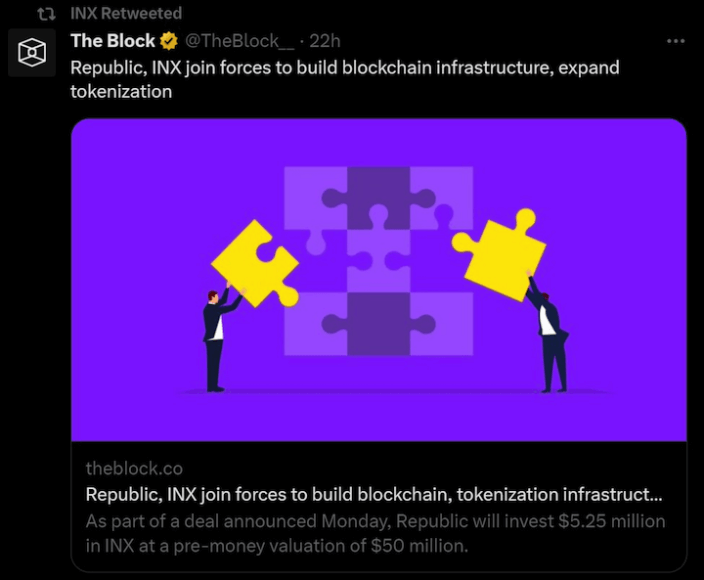INX and Republic, two prominent players in the blockchain and investment space, have recently made headlines with their joint investment of $5.25M to expand tokenization and improve access for global investors.

While this move holds promise for revolutionizing investment opportunities, examining this situation’s advantages and potential drawbacks is crucial. Coinhackz will delve into the pros and cons of INX and Republic’s investment and its implications for the future of tokenization and investor access.
Pros of INX & Republic’s Investment

- Enhanced Market Accessibility: The investment aims to facilitate greater access to investment opportunities for global investors, regardless of their geo or financial status. By leveraging tokenization technology, traditionally illiquid assets can be tokenized, opening doors to more diverse investment options.
- Increased Liquidity: Tokenization enables fractional ownership, allowing investors to purchase smaller portions of assets that were previously out of reach. This enhanced liquidity can attract a broader investor base, potentially increasing market efficiency and creating more liquid markets for previously illiquid assets.
- Cost Efficiency: Tokenization can reduce administrative and transactional costs associated with traditional investment processes. By digitizing assets and utilizing blockchain technology, smart contracts can automate tasks, streamline processes, and eliminate intermediaries, ultimately reducing costs for issuers and investors.
- Global Investment Opportunities: The collaboration between INX and Republic aims to expand investor access to international markets. That can empower investors to diversify their portfolios and participate in investment opportunities beyond their local markets, potentially generating higher returns and spreading risk.
Challenges of INX & Republic’s Investment
- Regulatory Challenges: The tokenization of assets and global investor access introduce regulatory complexities, as different jurisdictions have varying legal frameworks and requirements. Compliance with existing regulations and adapting to evolving regulatory landscapes pose challenges for INX, Republic, and investors, potentially leading to delays and uncertainties.
- Market Volatility: Tokenized assets, particularly those associated with emerging markets, can be subject to heightened volatility. Investors must carefully consider the risks of these investments, including potential price fluctuations, market manipulation, and limited liquidity in certain asset classes.
- Security Risks: Adopting tokenization and blockchain technology raises cybersecurity and data privacy concerns. With digital assets stored on distributed networks, the risk of hacks, theft, and unauthorized access becomes a critical consideration. Robust security measures must be in place to safeguard investors’ assets and personal information.
- Limited Investor Knowledge and Education: Tokenization is a relatively new concept, and many investors may need more knowledge and understanding of the technology and its associated risks. Educating investors about the benefits, potential pitfalls, and due diligence required when investing in tokenized assets is essential.
Conclusion
The joint investment by INX and Republic to expand tokenization and global investor access represents an exciting development in the investment landscape. While this move holds significant promise, it is essential to consider the positives WITH negatives of this situation. Enhanced market accessibility, increased liquidity, cost efficiency, and global investment opportunities are among the advantages. However, regulatory challenges, market volatility, security risks, and the need for investor education remain potential drawbacks.
Remember to consider the pros/cons of all situations and events! Visit our Crypto Adviser section to find more interesting facts and analytics.
As INX and Republic continue to pave the way for tokenization and global investor access, investors must conduct thorough research, assess risk tolerance, and stay informed about the evolving regulatory environment. By embracing the benefits while being mindful of the potential challenges, investors can navigate this emerging landscape and make informed investment decisions.

